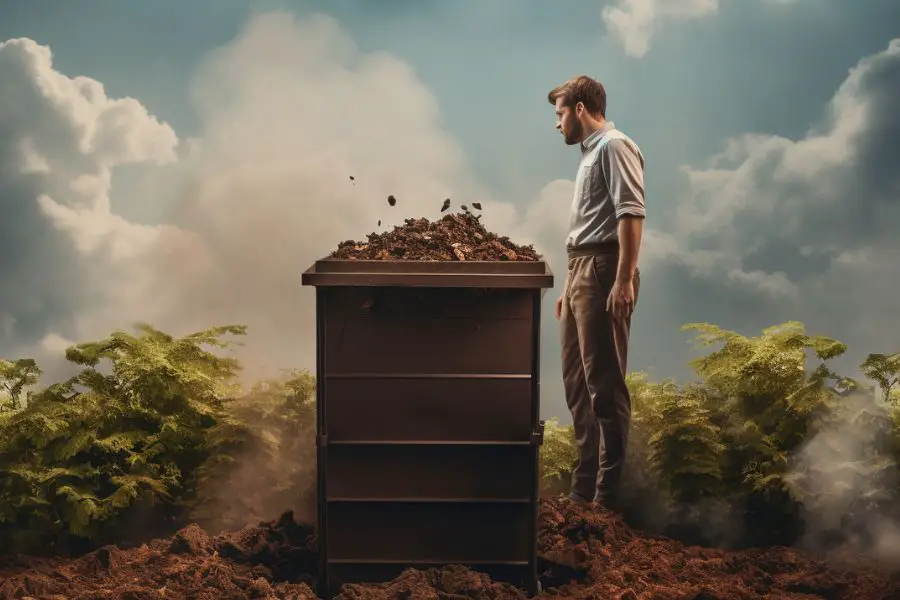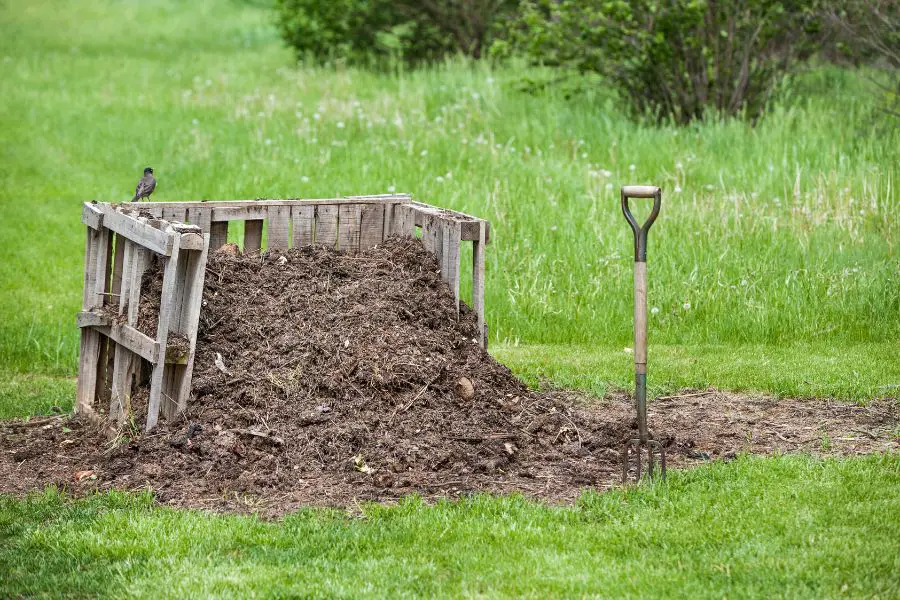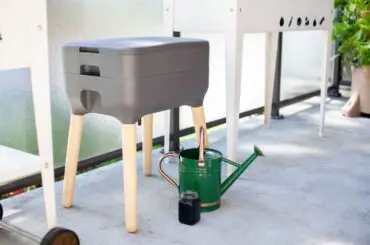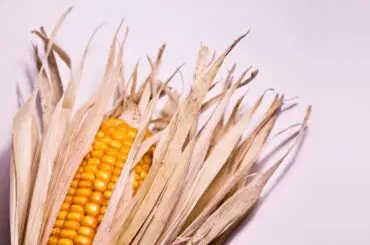For green-fingered gardeners, composting is a hugely rewarding activity. Turning kitchen scraps and yard waste into nutritious “black gold” for your plants is not just great for your garden, it’s also good for the planet. But to compost successfully, having the right setup is key. That’s why “How to Find Perfect Compost Bin” is important for you.

With so many different styles of composting bins out there, from basic cold bins to fancy hot composters and even solar-assisted models, how do you decide what’s best for your needs?
This detailed guide covers all the nitty gritty details about the various types of compost bins available, the features that matter most, and how to select the ideal one to suit your gardening requirements, space constraints, budget and lifestyle.
An Introduction to Compost Bins
Contents
Before diving into the specifics, let’s start with a quick rundown on what exactly a compost bin is and why you need one:
A compost bin is a container used to store and contain yard waste, food scraps, and other organic materials while they decompose.
-Bins keep your compost pile neat, tidy and in one place. This prevents it turning into an unsightly mess around your garden.
- They provide the ideal environment for decomposition, allowing you to compost year round.
- Bins retain moisture and heat, two essential ingredients for efficient composting by microorganisms.
- They keep pests like rodents and flies away from your waste.
- Compost bins speed up decomposition and prevent valuable nutrients from leaching away.
- They make harvesting mature compost easy when it’s ready for use in your garden.
So in a nutshell, compost bins help streamline the composting process and make this eco-friendly activity more convenient and hassle-free for the home gardener.
6 Key Factors to Consider When Choosing a Compost Bin
All compost bins aim to provide the best conditions for breaking down organic matter, but different models offer varying features that each have their own pros and cons. Here are the six main considerations when selecting a compost bin:
1. Composting Method: Hot vs Cold Composting
There are two main approaches when it comes to making compost:
- Hot composting involves actively maintaining optimal conditions for rapid decomposition. This fast, hot process requires frequent monitoring of moisture, turning the pile for aeration, and managing the ratio of materials. With some effort, finished compost can be created in as little as 4-6 weeks. A bin that holds in heat while allowing good airflow is ideal.
- Cold composting is a slower, more passive approach. You simply add materials to your bin periodically and leave it alone to break down slowly over 6 months to 2 years. Cold composting requires little maintenance but takes much longer to produce usable compost. A basic enclosed bin works well for this low-effort technique.
Consider whether you’re willing to actively manage a hot compost pile or would prefer the virtually no work cold composting route. This will guide what type of compost bin is best for your needs. Hot bins facilitate faster composting but require more input, while cold bins work fine if you’re patient.
2. Compost Bin Placement – Outdoors vs. Indoors
Will your compost bin live outside in the garden or inside your garage/shed? The ideal location determines what features you’ll want:
Outdoor compost bins perform best when they are:
- Sturdily built to withstand all weather conditions
- Dark in color to maximize solar heat absorption
- Well-ventilated to prevent soggy compost
- Rodent/pest resistant with tight-fitting lids and secure bottoms
Indoor compost bins work best when designed with:
- Odor control via charcoal filters to contain smells
- Special lids and collector trays to minimize leaks and drips
- Airtight seals to keep bugs out
Certain bins like worm composters can go either outdoors or indoors. Others are specially made for just one type of location.
3. Amount of Organic Waste Generated
Consider how much organic material you expect to compost – both kitchen scraps and yard waste. Overfilling your bin leads to dense, airless conditions while under-filling makes it hard to compost efficiently.
Typical organic waste volumes:
- 1-2 gallons/week – Small household → small bin (~3 cubic feet)
- 3-6 gallons/week – Medium household → medium bin (4-7 cubic feet)
- 6+ gallons/week – Large household/avid gardener → large bin (8+ cubic feet)
Match your bin size to your anticipated quantities of waste. You can always start small and get a second bin later if needed.
4. Available Space for the Composter
Evaluate how much room you have for a compost bin in the spot you plan to put it. Compost bins come in many shapes and sizes – long and low, short and wide, octagonal, etc.
Measure out the space in your intended composting spot and shop for a bin that will fit those physical constraints. This prevents buying one that’s too big or small for the allotted area. Don’t forget to account for hatches and access doors too!
5. Budget for Your Compost Bin
Compost bins range dramatically in price from budget-friendly to premium-priced. Set realistic expectations based on what you can afford.
Starter/budget bins – $50 to $150 range
- Basic plastic bins
- Single chamber tumblers
- DIY wooden pallets
Mid-range bins – $150 to $300
- Insulated plastic bins
- Multi-chamber tumblers
- Elevated wooden bins
Premium bins – $300+
- High-capacity insulated tumblers
- Multi-bay hot composting systems
- Solar-heated, automated bins
There are great options at every price point, so choose a bin that fits comfortably within your budget.
6. Composter Aesthetics
Do looks and visual appeal matter for your compost bin’s location? Some bins blend in beautifully in landscapes while others look more utilitarian.
- Natural wood bins fit lawn and garden settings
- Elevated tumblers have modern visual appeal
- Painted plastic bins let you match your surroundings
- Ceramic composters look chic and decorative
There are attractive options even for indoor composting like stainless bins or woven baskets. Don’t underestimate the value of choosing a bin you enjoy looking at!

7 Types of Composting Systems To Consider
Now that you know which features to prioritize, let’s explore some of the most popular compost bin styles and highly rated products in each category.
1. Cold Composting Bins
These simple bins provide basic containment as organic waste passively breaks down over many months.
- What To Look For: Enclosed design, holes for airflow. Easy open access.
- Good For: Hands-off, low-maintenance composting.
- Try: Firwood Compost Bin, Envirocycle Mini Composter, Geobin Compost Bin
2. Hot Composting Bins
These well-engineered bins create optimal conditions for fast, active composting.
- What To Look For: Insulated walls, ample ventilation, tumbling mechanisms.
- Good For: Producing usable compost quickly.
- Try: Miracle-Gro Tumbler, FCMP Outdoor Tumbling Composter, Envirocycle Solar Composter
3. Multi-Chamber Bins
Multiple compartments allow you to efficiently compost in stages.
- What To Look For: Divided bins, access to each section.
- Good For: Streamlined composting from start to finish.
- Try: Algreen Cascade Bin, FCMP Outdoor Tumbling Composter, Geobin Compost Bin
4. Worm Composting Bins
Let worms rapidly break down food waste into vermicompost.
- What To Look For: Dark, moist, ventilated bin. Worm tea collector.
- Good For: Composting food waste indoors.
- Try: Worm Factory 360, Uncle Jim’s Worm Farm, Viagrow Worm Composter
5. Bokashi Composting
Rapidly ferment food waste using special microbes. Requires burial/composting after.
- What To Look For: Airtight bucket, starter bran, drainage spout.
- Good For: Fermenting all food waste quickly.
- Try: Vitamix FoodCycler, Exaco Trading Co. Bokashi Bucket
6. Solar Composters
Sun-powered bins use green heating to accelerate decomposition.
- What To Look For: Greenhouse-style lid, insulation, ground contact.
- Good For: Warm-climate composting.
- Try: Sun-Mar Compact, Envirocycle Solar Composter, Solvita Solar Digester
7. Automated Composting Systems
Specialized bins to compost with minimal effort. May incorporate tumblers, digesters, or electronic compost system controllers.
- What To Look For: Self-mixing features, sensors, built-in thermometers.
- Good For: Virtually hands-free composting.
- Try: Tidyway Portable Tumbler, Vitamix FoodCycler, Vitamix FoodCycler
5 Key Tips for Composting Success
Once you’ve picked out the perfect bin, use these handy tips to master the art of making great compost:
- Start with the right mix – Balance green and brown materials like food, leaves, manure and straw.
- Mind your moisture – Compost should feel damp but not soggy. Add water or dry amendments as needed.
- Fluff it up – Turn or mix materials to improve aeration and prevent dense clumps.
- Adjust as needed – Monitor temperature and other factors. Tweak your methods if issues arise.
- Let it cure – Allow finished compost to rest 3-4 weeks before using for the best results.
Find the Ideal Composting Solution For Your Home
Composting is an incredibly rewarding activity that benefits your garden while diverting valuable organic resources away from landfills. With so many types of compost bins to choose from, take the time to assess which features fit your gardening lifestyle, space constraints, and composting goals.
Use this detailed guide to demystify the choices and home in on a composter that’s tailored specifically for your needs. With the right composting setup, you’ll be churning out healthy, nutrient-rich compost for your plants in no time!
Read Next: Proven To Stop Compost From Smelling




